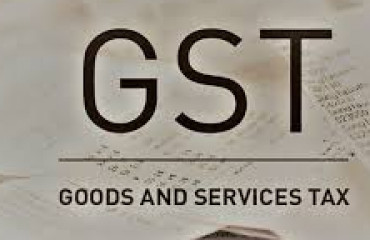
CBIC chairman Vivek Johri has written to field formations asking them to ensure scrutiny is conducted in a time-bound manner. "Zonal chiefs may like to have the data examined and suitably taken up as per the prescribed SoP (standard operating procedure) in a time-bound manner," Johri said in a letter, dated April 4, seen by ET.
Businesses need to gear up for some stiff queries from goods and services tax authorities, as they begin scrutiny of returns for the first time since the new indirect tax regime was launched in 2017.
The Central Board of Indirect Taxes & Customs (CBIC) on Sunday rolled out computer-assisted automated selection of returns under GST, which will be based on certain risk-based parameters including claims of input tax credit.
CBIC chairman Vivek Johri has written to field formations asking them to ensure scrutiny is conducted in a time-bound manner. "Zonal chiefs may like to have the data examined and suitably taken up as per the prescribed SoP (standard operating procedure) in a time-bound manner," Johri said in a letter, dated April 4, seen by ET.
Johri said the first tranche of GSTINs (GST Identification Numbers) selected for scrutiny, on the basis of risk parameters, had already been shared by the directorate general of analytics and risk management with field formations.
A government official said the directorate general would send all the financial data and transaction details related to the GSTINs which would be picked for the scrutiny case, so that officials would take less time.
"In case any discrepancies are found, a notice may be issued by the department with a specific query and backed by documents, which will reduce the time taken in the scrutiny process," the official added.
A government official said some of the risk parameters included input tax credit claims not matching the GST return with income tax return and past records of tax evasion.
"With a view towards enhancing compliance through effective and standardised scrutiny of GST returns, the board has been working towards automating the scrutiny process," Johri wrote in the letter.
The official said the government was working hard to improve compliance and scrutiny of returns would be a key focus to plug in any revenue leakages.
"With a view towards enhancing compliance through effective and standardised scrutiny of GST returns, the board has been working towards automating the scrutiny process," Johri wrote in the letter.
The official said the government was working hard to improve compliance and scrutiny of returns would be a key focus to plug in any revenue leakages.
"Scrutiny of returns is our focus this year and we will be using technology such as AI to assess risk parameters in a better way," the official said, adding that the department had data handy and the process would go a long way in improving compliance.
Experts said businesses need to be extra careful while filling their return as data analytics would make it easier to detect evasion.
Businesses must ensure the GST data are reconciled before submission, MS Mani, partner, Deloitte India, said.
The CBIC had last month issued the SoP to streamline the scrutiny of GST returns filed for the financial years 2017-18 and 2018-19.
Last month witnessed an all-time high gross GST collection at Rs 1,42,095 crore for the Centre and states together.
This was 15% higher than the GST revenue in the same month last year. The average monthly gross GST revenue in 2021-22 was Rs 1.23 lakh crore as compared to Rs 94,734 in 2020-21 and Rs 1.01 lakh crore in 2019-20.
